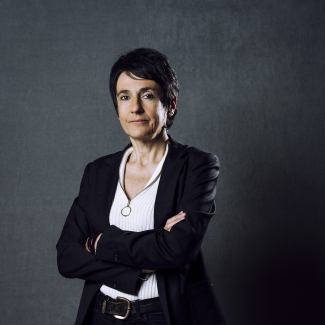
A new cutting-edge microscope inaugurated at the CEMES-CNRS
The Centre d'élaboration de matériaux et d'études structurales (CEMES) of the CNRS recently developed an innovative method to study the properties of materials at very small scales of time and space. In order to perform the transfer of this new technology and make it accessible to the entire community, French researchers from the CEMES-CNRS and Japanese engineers from the Hitachi High-Technologies Corporation (HHT) worked together to prepare a new dedicated microscope, within the framework of the HC-IUMi (Hitachi-CNRS Infrastructure of Ultrafast Microscopy) joint laboratory, on which this method will be transferred and optimised. This cutting-edge instrument will be inaugurated on 24 September in Toulouse.
Relations between the CEMES-CNRS and HHT began in 2009, when the French laboratory was seeking to acquire a new transmission electron microscope (TEM) able to perform experiments that would have been impossible with conventional instruments. French and Japanese researchers subsequently collaborated in the development of a new microscope that fully meets research needs.
TEM offers excellent spatial resolution, but has low temporal resolution. Indeed, it can study physical phenomena at the atomic scale, but cannot follow their evolution with sufficient time resolution. To overcome this limitation, CEMES researchers developed a unique coherent source1 of ultrafast electrons, which they initially developped on an old HHT microscope. This electron gun can generate ultrafast electron pulses (of a few hundred femtoseconds) thanks to the coupling of a metallic nano-tip and an ultrafast laser.
Within the HC-IUMi joint laboratory framework started in 2018, this source will be installed on a new modern microscope. Key components of this new instrument were jointly designed by HHT and the CEMES, to take full advantage of the potential offered by this new ultrafast technology. The combination of such a coherent source of ultrafast electrons with the next generation microscope will enable, among other things, the study of physical phenomena such as the dynamics of electric, magnetic or strain fields in nanomaterials over very short periods and with sub-nanometric2 spatial resolution.
The CEMES completed six months of construction work to meet the requirements for installing such an instrument (mechanical, electromagnetic, and acoustic stability in particular). The French-Japanese team also developed a new “double stage” objective lens allowing to inject the laser beam in two sample stage positions within the optical column. This lens was produced by HHT, and the first tests were carried out with the CEMES team at the HHT factory in Hitachi Naka (Japan), before the microscope’s transfer to Toulouse in the spring of 2019.
By combining this lens with the ultrafast coherent electron source and various accessories, this new microscope will make it possible to develop new methods to explore the properties of materials. This unique instrument offers the CEMES-CNRS, along with the entire international community, the opportunity to study the ultrafast dynamics of matter on scales ranging from the micrometre to the atom, thereby supporting various research areas such as nano-optics, femtomagnetism, vibrational mechanics, femtochemistry, and the dynamics of biological macromolecules.


Contact
Notes
- With a coherent source, the electron beam used to study samples in the microscope carries the same quantities of energy and momentum (i.e. travels along the same trajectory). An optimum spatial coherence is mandatory to study fields using electron interferometry experiments.
- A nanometre (nm) is equal to 0.000000001 = 10-9 metres


